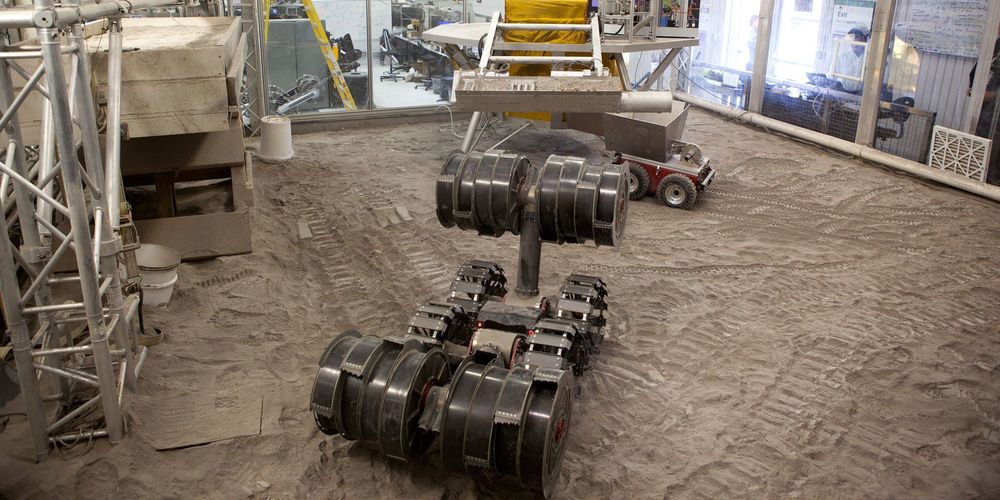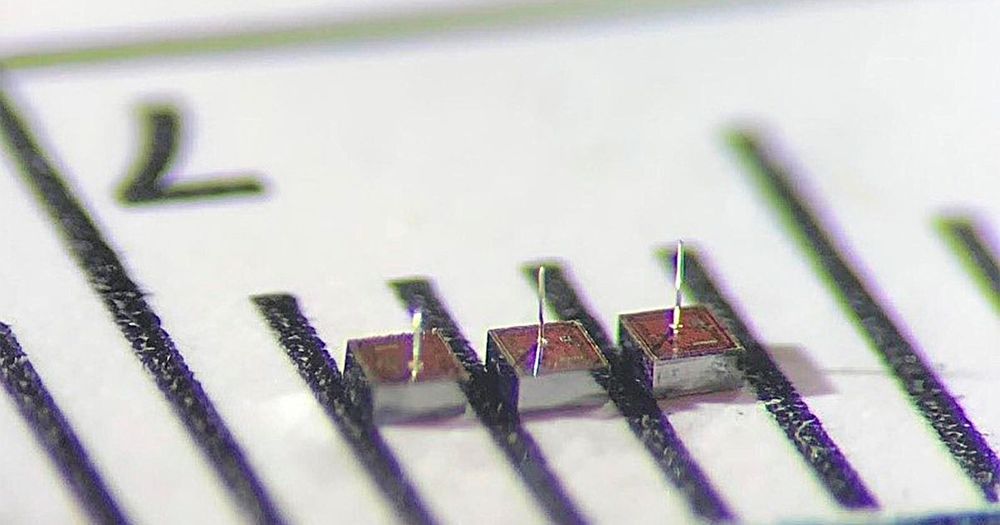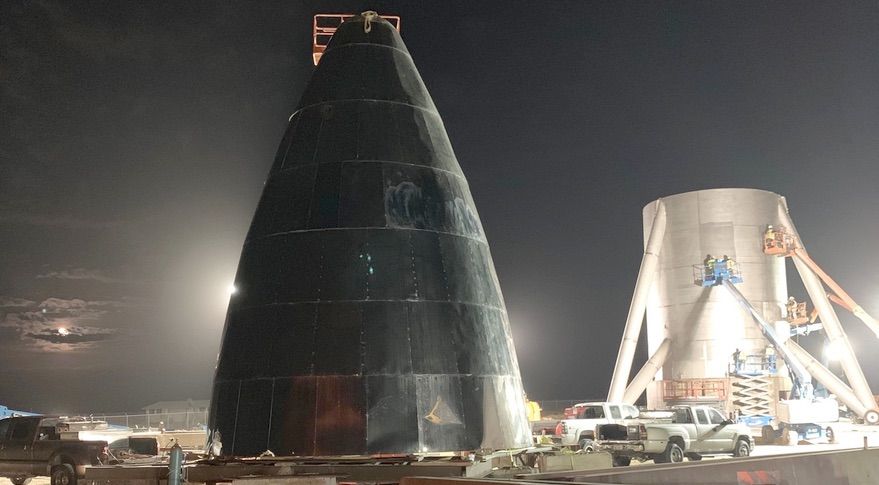Page 8799
May 20, 2019
Achieving Bezos’ bold vision of space settlement requires bold policy direction
Posted by Klaus Baldauf in categories: economics, habitats, policy, space
Those who watched the full 51-minute version of Jeff Bezos’ May 9 Blue Moon announcement were treated to a tutorial on the work of Dr. Gerard K. O’Neill. In the 1970s Dr. O’Neill popularized the idea of space colonies that rotate in orbit allowing tens of thousands of inhabitants to live comfortable lives in Earth-like habitats. Bezos even commissioned updated renderings to excite the audience’s imagination.
Bezos articulated, as he has on many occasions that human civilization should and must expand out into the space to live and work in permanent space settlements. Doing so will allow the best planet in the Solar System, the Earth, to become a protected treasure in the vast harshness of space.
He understands that by creating the infrastructure to accelerate economic development in space his vision of space settlement will more rapidly come to fruition. But Bezos is sober about his space colony ambitions. He calls it a multigenerational endeavor. And so it may be.
Continue reading “Achieving Bezos’ bold vision of space settlement requires bold policy direction” »
May 20, 2019
Inside Swamp Works, the NASA Lab Learning to Mine the Moon
Posted by Klaus Baldauf in category: space
NASA’s Swamp Works may be humans’ best hope for figuring out how to live and work on other planets.
May 20, 2019
Environmental toxins can impair sexual development and fertility of future generations
Posted by Xavier Rosseel in categories: biotech/medical, health, neuroscience
Exposure to environmental pollutants can cause alterations in brain development that affect sexual development and fertility for several generations, according to findings to be presented in Lyon, at the European Society of Endocrinology annual meeting, ECE 2019. The offspring of pregnant rats exposed to a mixture of common endocrine-disrupting chemicals (EDCs), at doses equivalent to those commonly experienced by people, showed impairments in sexual development and maternal behaviour that were passed on through several generations. These findings suggest that current levels of endocrine-disrupting chemicals in our environment may already be causing long-lasting harm and that people and agencies should take measures to minimise exposure.
Endocrine-disrupting chemicals can interfere with the normal function of our hormones and have previously been associated with infertility and altered sexual development in animals and people. We are exposed to hundreds of these pollutants in our daily lives, as they are used in the manufacture of plastics, pesticides and medicines. However, the extent of damage being done to our health and the consequences to future generations remains unclear. Rodent studies have suggested that exposure to EDCs can affect brain development through several generations but the generational effects on sexual development and reproduction have not previously been investigated.
In this study, David Lopez Rodriguez a graduate student in Anne-Simone Parent’s lab at the University of Liege in Belgium monitored the sexual development of three generations of rats, whose parent generation only were exposed to a mixture of common EDCs during pregnancy and lactation. The female rats born in the first and second generation showed impairments in their care for their own pups. However, the female rats in the second and third generation exhibited a delayed onset of puberty and altered reproductive cycle and ovarian follicle development, indicating that their fertility was affected, even though they were never themselves exposed to the EDCs. These changes were associated with altered gene expression in their brains that are known to affect how reproductive hormones are regulated.
China now has no choice but to pursue technological independence, and will burn the cash to achieve it.
May 20, 2019
Friend, foe or unknown force flying overhead? Congress should find out
Posted by Derick Lee in categories: government, military
The good news is that America already possesses vast sensor networks, ranging from the depths of the oceans to the harsh bleakness of space, capable of collecting the requisite information. All that Congress need do at this juncture is to require the Secretary of Defense and the Director of National Intelligence to review the UAP issue and deliver a report providing a comprehensive assessment. This report should include not only an estimate of the situation but a description of the structure and processes required to ensure effective collection and analysis going forward.
Since 2015, dozens of Navy F-18 fighter jets have encountered unidentified aerial phenomenon (UAPs) — once commonly referred to as UFOs — off the East Coast of the United States, some not far from the nation’s capital. Encounters have been reported by other military aircraft and civilian airliners elsewhere in the U.S. and abroad, too, including videos shot by airline passengers.
What these UAPs were and who was flying them — whether friends, foes or unknown forces — remains a mystery. Yet careful examination of the data inevitably leads to one possible, disturbing conclusion: A potential adversary of the United States has mastered technologies we do not yet understand to achieve capabilities we cannot yet match.
Continue reading “Friend, foe or unknown force flying overhead? Congress should find out” »
May 19, 2019
Wireless Network Brings Dust-Sized Brain Implants a Step Closer
Posted by Klaus Baldauf in categories: biotech/medical, engineering, internet, robotics/AI
Brain-computer interfaces have managed some amazing feats: allowing paralyzed people to type words and move a robot using only their minds, to name two examples. Brown University neuroengineering professor Arto Nurmikko has had a hand in some of those developments, but even he says the technology is at only a rudimentary stage—the equivalent of the computer understanding the brain’s intention to bend a single finger.
“We’re trying to go from the bending-of-the-finger paradigm to tying shoe laces and even to the concert pianist level. That requires lots more spatial and temporal resolution from an electronic brain interface,” Nurmikko says. His team is hoping that kind of resolution will come along with the transition from a single, hard wired neural implant to a thousand or more speck-size neural implants that wirelessly communicate with computers outside the brain. At the IEEE Custom Integrated Circuits Conference, engineers from Brown University, Qualcomm, and the University of California San Diego presented the final part of a communications scheme for these implants. It allows bidirectional communication between the implants and an external device with an uplink rate of 10 megabits per second and a downlink rate of 1 Mb/s.
“We believe that we are the first group to realize wireless power transfer and megabits per second communications” in a neural implant, says Wing Ching (Vincent) Leung, technical director at the Qualcomm Institute Circuits Lab at UC San Diego.
Continue reading “Wireless Network Brings Dust-Sized Brain Implants a Step Closer” »
May 19, 2019
How AI will liberate doctors from keyboards and basements
Posted by Paul Battista in categories: biotech/medical, robotics/AI

In hospitals, where many people are treated for life-threatening illnesses, having quality time with your doctor can be the difference between life and death.
However, physicians are often busy, seeing dozens of patients each day. So, then, how can we get more time with them? A.I., says physician and author Eric Topol. In this video, he explains how machine intelligence can free up doctors’ time while they go through their rounds.
May 19, 2019
Where is the Origin of Life on Earth?
Posted by Xavier Rosseel in categories: bioengineering, biological, chemistry, evolution, physics

To answer the iconic question “Are We Alone?”, scientists around the world are also attempting to understand the origin of life. There are many pieces to the puzzle of how life began and many ways to put them together into a big picture. Some of the pieces are firmly established by the laws of chemistry and physics. Others are conjectures about what Earth was like four billion years ago, based on extrapolations of what we know from observing Earth today. However, there are still major gaps in our knowledge and these are necessarily filled in by best guesses.
We invited talented scientists to discuss their different opinions about the origin of life and the site of life’s origin. Most of them will agree that liquid water was necessary, but if we had a time machine and went back in time, would we find life first in a hydrothermal submarine setting in sea water or a fresh water site associated with emerging land masses?
















